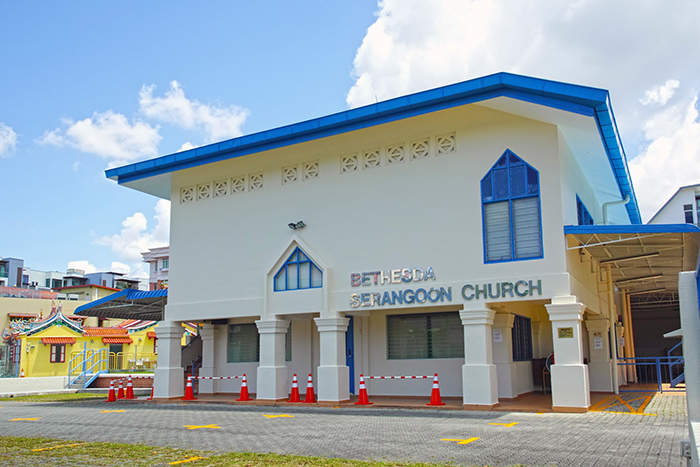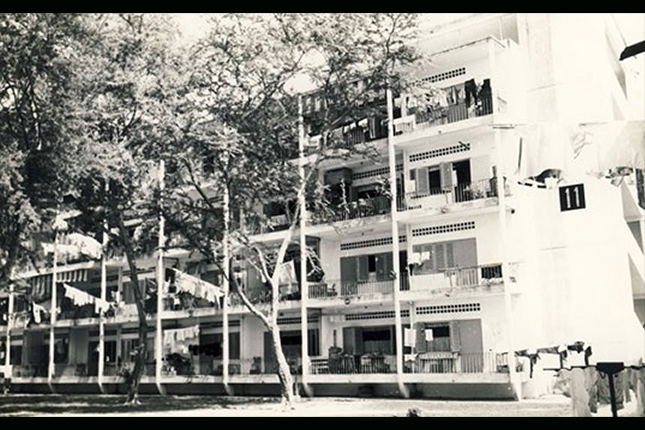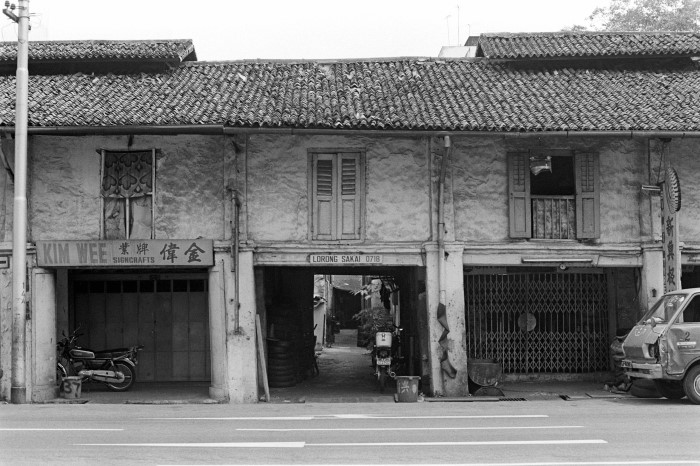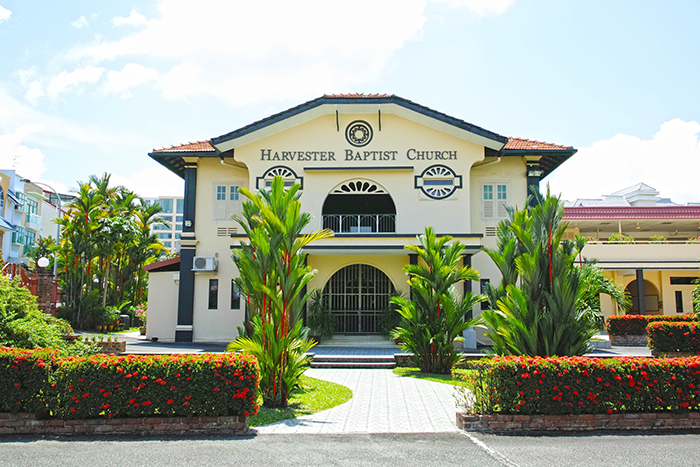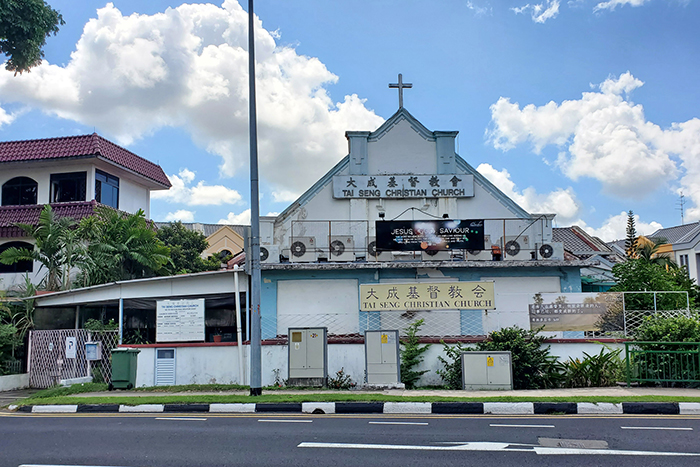Beginning of Brethren Movement in Singapore
Upon his arrival in Singapore in 1857, Philip Robinson and seven other believers pioneered the Brethren movement in Singapore. The movement had a humble beginning—they held their first prayer service at a residence situated at 108 Bencoolen Street in 1864. Within two years, the assembly had grown, and the believers moved to new premises at 77 Bras Basah Road, more commonly known as Bethesda Bras Basah. As of 2016, there are 20 autonomous Brethren Christian churches in Singapore, and Bethesda Serangoon Church is one of them.
Bethesda Serangoon Church
The property used to be the family home of Mrs Claudette M Poulier, whose family had donated their house to the church. It is unclear, however, when this transaction happened.
The overall architecture of the church features a combination of modernity and religious influences. The reinforced concrete building sits on pseudo Tuscan masonry columns. Its elevated floors—a practical response to the tropical climate—are influenced by that of Malay traditional architecture. The ground level is walled-up, giving the illusion of a two-storey building. Its big hip roof with extended eaves provide shelter from tropical rain and sun. Christian iconic elements such as elongated pentagon-shaped windows and the crucifix are incorporated into the building’s design.
As of 2020, Bethesda Serangoon Church conducts many activities and it also houses the church’s kindergarten. In addition, the church runs an annual Vacation Bible School targeted at pre-schoolers and primary school kids.
The church is also part of the Inter-Racial and Religious Confidence Circle (IRCC), whose mission is to safeguard religious harmony in Singapore.
Buildings and sites featured on Roots.SG are part of our efforts to raise awareness of our heritage; a listing on Roots.SG does not imply any form of preservation or conservation status, unless it is mentioned in the article. The information in this article is valid as of July 2020 and is not intended to be an exhaustive history of the site/building.




